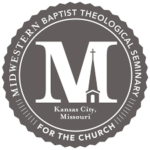Seeing and Savoring the Divine Son in All of Scripture
Seeing and Savoring the Divine Son in All of Scripture
Transcript
JY: Welcome to GearTalk. Today, Jason DeRouchie will walk through seven ways to see and savor Jesus in all of Scripture. This is from a message given by Jason at the annual meeting of the Evangelical Theological Society in 2020.
JD: Seeing and Savoring the Divine Son in All of Scripture. Or an alternative title: How Does Biblical Theology Help us See and Celebrate Christ in the Old Testament?
The only Bible that Jesus had was the Old Testament and he said it concerned him. Jesus highlighted that his Scriptures bore witness about him, John 5, that Abraham saw his day and was glad, John 8, that Moses wrote of him, John 5, that prophets, righteous people and kings longed for his coming, Matthew 13, Luke 10, and that everything that the Old Testament said concerning him would be fulfilled, Luke 24.
Moreover, following his resurrection, Jesus opened the minds of his disciples to understand the Scriptures. He said to them, “Thus it is written, that the Christ should suffer, and on the third day rise from the dead, and that repentance for the forgiveness of sin should be proclaimed in his name to all nations, beginning from Jerusalem,” Luke 24:45-47. According to Jesus, when we faithfully understand the Scriptures, he says that plainly, that directly, that broadly, what we will see in the Old Testament is a message of the Messiah, his death, and his resurrection and the global mission that he would generate.
Paul, too, was an Old Testament preacher who saw in his Bible a message of God’s Kingdom concerning the Messiah and the church he would build, Acts 26. While preaching from the Old Testament, he decided to know nothing among the Corinthian church except Christ and him crucified, 1 Corinthians 2:2. For Paul, Christ supplies the necessary lens for fully grasping the Old Testament’s message. In Jesus, God removes the veil and thus allows us to clearly see how the Old Testament itself anticipates the superior glory of the New Covenant, 2 Corinthians 3:14. And it is in Christ that God reveals the mystery that he kept secret for long ages, but is now making known through the very Old Testament itself, Romans 16:25-26.
Paul affirmed that the Old Testament initially promised the good news embodied in the person and work of Jesus Christ. As an apostle, he was set apart for the Gospel of God, which he promised beforehand through his prophets in the Holy Scriptures concerning his son, Romans 1:1-3. The New Testament realizes what the Old Testament first anticipated—the very good news that the reigning God would eternally save and satisfy believing sinners through Christ’s life, death and resurrection.
The progress from creation to the fall to redemption to consummation is in a very real sense his story, and the gospel we enjoy was anticipated, foreshadowed, and foretold much earlier. John 1, John 5, John 8, Hebrews 11, 1 Peter 1. God created all things by the Son, through the Son, for the Son, which means that the Old Testament itself is written for the glory of the Son. We are supposed to see and savor the divine Son in all of Scripture.
To do this faithfully requires, I believe, a multi-form approach, because Jesus fulfills the Old Testament in various ways. The Christian interpreter therefore must follow the signals God supplies us in his inerrant word, his unified word, so as to properly magnify the Messiah and his work. This study will overview seven ways that biblical theology helps us see and celebrate Christ in the Old Testament.
#1: Biblical theology helps us see and celebrate Christ through the Old Testament’s direct messianic predictions.
Naturally, this is where one would go first. Peter stressed what God foretold by the mouth of all the prophets that his Christ would suffer, he thus fulfilled, Acts 3:18. Every one of the prophets from Moses onward anticipated the Messiah’s work and mission, Acts 3:22-24, Acts 10:43.
The Old Testament is loaded with explicit and implicit predictions. “He was wounded for our transgressions, crushed for our iniquities. Upon him was the chastisement that brought us peace, and by his stripes we are healed,” Isaiah 53. These words in Isaiah portray a servant of God who would suffer as a substitute for many, and Peter’s writing about this Christ saw this text fulfilled in the very person of Jesus. “He himself bore our sins in his body on the tree, that we might die to sin and live to righteousness. By his wounds you have been healed,” 1 Peter 2:24.
Yahweh promised Abraham that a single male offspring would possess the gate of his enemies, and that in him all the nations of the Earth would be blessed, Genesis 22:17-18. Then Paul notes how God fulfilled this promise of international blessing to the Gentiles in Christ Jesus, Galatians 3:8, 14. Indeed, “the promises were made to Abraham and to his offspring,” who is Christ. “And if you are Christ’s, then you are Abraham’s offspring, heirs according to the promise,” Galatians 3:16, 29.
Similarly, Yahweh promised through Ezekiel, “I will set up over them one shepherd, my servant David, and he shall feed them,” Ezekiel 34:23. Then in John 10, Jesus declared, “I am the Good Shepherd,” John 10:11, and again, “There will be one flock, one shepherd,” John 10:16.
At times, the element of prediction-fulfillment is even more pronounced, as when Micah 5:2 foretells the birth of the royal deliverer in Bethlehem, and Matthew 2:6 explicitly asserts that it happened just as the prophet wrote. Christ fulfills the Old Testament as the specific focus or goal of direct Old Testament messianic predictions and redemptive-historical hopes. So when you read the Old Testament’s direct messianic predictions, see and savor how the Divine Son realizes these hopes.
#2: Biblical theology helps us see and celebrate Christ through the Old Testament salvation-historical story and trajectories.
The Old Testament does a great job creating problems for which Jesus provides the solution. Both the old and New Testaments are framed by the narrative of redemption, a historical plot designed to magnify that God reigns, saves and satisfies through covenant for his glory in Christ.
Now I’ve attempted for my own students to capture this biblical storyline through 7 stages—not dispensations—and I just package it as Kingdom:
K—Kick-off and rebellion for creation, fall, flood
I—Instrument of blessing for the Patriarchs
N—Nation redeemed and commissioned for the Exodus, Sinai and Wilderness
G—Government in the land for conquest and kingdoms
D—Dispersion and return for exile and initial restoration
O—Overlap of the ages for Christ’s work in the church age
M—Mission accomplished for Christ’s return and Kingdom consummation
The entire storyline progresses from creation to fall to redemption unto consummation, and it highlights the work of Jesus as the decisive turning point in salvation history. “The Law and the Prophets were until John. Since then the good news of the Kingdom of God is preached,” Luke 16:16. “The law was our guardian until Christ came, in order that we might be justified by faith. But now that faith has come, we are no longer under a guardian, for in Christ Jesus you are all sons of God, through faith,” Galatians 3.
The plot line of the Bible is guided by five major salvation-historical covenants, each of which finds its terminus in Christ and the first four of which are all named after the covenant head or mediator:
In fulfillment of the Adamic-Noahic Covenant, Jesus is the son of man, the last Adam, the image of God.
In fulfillment of the Abrahamic Covenant, Jesus is the offspring of Abraham and the agent of universal blessing.
In fulfillment of the Mosaic Old Covenant, Jesus represents Israel. He stands as God’s son, Yahweh’s servant, the embodiment of wisdom, the one who fulfilled the law’s demands and the very substance of all covenant shadows.
In fulfillment of the Davidic Covenant, Jesus is the king of the Jews, the son of David.
In fulfillment of the New Covenant promises, Jesus is the prophet like Moses who is to come, and the only true mediator between God and man.
We also see that various themes progress or develop as God gradually reveals more of himself and his ways through biblical revelation. Some of the main ones would include covenant, God’s Kingdom, law, Temple, God’s presence, atonement, mission, all of which find their focus in Jesus. Christ fulfills all of the Old Testament salvation-historical trajectories. So when you consider the Old Testament’s redemptive story, see and savor how the Divine Son stands as the goal and climax of all Scripture’s progress and integration.
#3: Biblical theology helps us see and celebrate Christ by highlighting how the old and new ages, creations and covenants are similar yet distinct.
The progress of the biblical covenants and the history of redemption display numerous points of similarity and contrast, many of which center on the person of the divine Son. Some of the analogies and differences come in type and antitype relationships, which I’ll unpack next. Another major similarity comes in the very structure of grace in both covenants, wherein gracious redemption gives rise to gracious law-giving. In both covenants, obedience follows deliverance and not vice versa.
In light of this, the interpreter can build numerous analogies between the surface features of the old and the new covenants, recognizing similarities and then magnifying Christ as the one who now supplies the pattern, the pardon, the power and the promise for living God’s way for God’s glory.
In the way of contrast, while the structure of grace may be similar, the very nature of grace built into the old and the new covenants is different. Whereas the New Covenant supplies freedom from sin and power for obedience to all covenant members—yes, I’m a Baptist—nothing organic to the old covenant could change hearts. Under Moses, the redemption and giving of the law remained external for the majority, whereas the redemption and law in the new covenant are both internalized in all members by the eschatological work of the Spirit of Christ.
Numerous other points of contrast or progression are also apparent. For example: Whereas Adam disobeyed and brought death to all, Christ obeys and brings life to many, Romans 5. Whereas God used the blood of bulls and goats to picture atonement in the old covenant, Christ’s own substitutionary sacrifice provides the ground for eternal redemption, Hebrews 9. Whereas access to Yahweh’s presence in the temple was restricted to the high priest on the Day of Atonement, Christ’s priestly work opens the way for all in him to enjoy God’s presence, Hebrews 9 and 10. Whereas the nations needed to come to the Tabernacle or temple to encounter the Lord’s presence in the Old Covenant, the Spirit of Christ now empowers the church in its witness to the nations from Jerusalem to the ends of the earth, Matthew 28, Acts 1.
The work of Jesus creates both continuities and discontinuities. We can celebrate his work more by identifying the patterns and the transformations. So when you recognize similarities and contrast between the old and new ages, creations and covenants, I urge you see and savor how the divine Son influences all reality.
#4: Biblical theology helps us see and celebrate Christ by noting how Old Testament characters, events, and institutions clarify and anticipate his person and work.
The author of Hebrews said that the Old Testament was a shadow of the good things to come, Hebrews 10:1. Similarly, Paul asserted that clean and unclean food laws, the various Jewish festivals and monthly sacrificial calendar, even the Sabbath, were each a shadow of the things to come, but the substance belongs to Christ, Colossians 2:17.
In the New Testament, these anticipations and pointers are called types or examples that in turn find their counter or fulfillment in Jesus as their ultimate realization. God structured the progressive development of salvation history in such a way that certain Old Testament characters (Adam, Melchizedek, Moses, David), certain events (the flood, the exodus, the return to the land), institutions or objects (the Passover lamb, the temple, the priesthood), all of these bear meanings that color and predictively anticipate the life and work of Jesus Messiah.
Just because Jesus has come, it doesn’t mean you can throw out the Old Testament or jettison it because the types have now reached their antitype. No, the types themselves verify the work of Christ and anticipate the person and work of Christ. So when you identify such types, see and savor how the divine Son is the substance of all earlier shadows.
#5: Biblical theology helps us see and celebrate Christ as we revel in Yahweh’s identity and activity.
You’ll recall that Jesus said no one has seen God the Father except the Son, John 1, John 6, but that “whoever has seen me has seen the Father,” John 14. What this seems to mean is that when Yahweh becomes embodied in a form in the Old Testament, we are most likely meeting the pre-incarnate Son. No one has seen the Father. The Father is there, the Spirit is there. I agree, every theophany is Trinitarian, and yet the person that they are encountering, I think would be the Son.
We see him in the stories of Abraham’s third guest, Jacob’s wrestling opponent, Joshua’s commander of the Army of Yahweh, Ezekiel’s Exalted King, Daniel’s son of man, and the numerous manifestations of the angel or messenger of Yahweh. We also see him in Isaiah’s vision of the Lord seated on the throne, Isaiah 6, as John asserts, “Isaiah said these things because he saw his glory and spoke of him,” John 12. Each of these revelations provide a glimpse of the promised Christ, who had come as the God-man. And when we read these texts, we should see and savor our coming savior, the Lord Jesus.
But there’s more. When Yahweh revealed himself to Moses in Exodus 3:14, he declared “I AM WHO I AM.” When John wrote his gospel, he went out of his way to show that Jesus explicitly linked himself to Yahweh by his identity statements and his actions.
- Thus, he declared, “Before Abraham was, I am,” John 8.
- Jesus is the calmer of storms: “I am; do not be afraid,” John 6.
- He’s the all-satisfying one: “I am the bread of life,” John 6.
- He’s the ultimate guide and enabler. “I am the light of the world,” John 8.
- He’s the one in whom you must be saved. “Unless you believe that I am, you will die in your sins,” John 8.
- He’s the one whom people will link with Yahweh after his death and resurrection. “When you have lifted up the Son of Man, then you will know that I am,” John 8.
- “I am telling you this now, that when the resurrection takes place you may believe that I am,” John 13.
- He’s the only entry to refuge. “I am the door of the sheep,” John 10.
- He’s the ultimate provider and protector. “I am the good shepherd,” John 10.
- He’s the one who provides eternal life and access to the Father. “I am the resurrection and the life,” John 11. “I am the way, and the truth, and the life. No one comes to the Father except through me,” John 14.
- He’s the one who helps us grow. “I am the true vine. Whoever abides in me and I in him, it is he that will bear much fruit,” John 15.
- He is the one whose identity demands our homage. “When Jesus said to them, ‘I am he,’ they drew back and fell to the ground,” John 18.
When we hear Yahweh speaking or acting in the Old Testament as the object of people’s faith, we are seeing the very one who would embody himself in the person of Jesus. The Word who was in the beginning with God, he was God, John 1. The very Son who would be named Jesus, was in the form of God, Philippians 2. He was the very image of the invisible God, Colossians 1. He was the radiance of the glory of God and the exact imprint of his nature, Hebrews 1.
Thus the author of Hebrews could attribute Moses’s reproach for God’s sake as a reproach endured for Christ: “He considered the reproach of Christ greater wealth than the treasures of Egypt, for he was looking to the reward,” Hebrews 11. This is also why Jude could identify Israel’s deliverance at the exodus as Israel’s deliverer as Jesus: “Now I want to remind you, although you once fully knew it, that Jesus, who saved a people out of the land of Egypt, afterward destroyed those who did not believe,” Jude 5. Who fought for Israel and rescued them at the exodus? Was it not Yahweh? Yes. And it was Jesus.
Jesus said that if we have seen him, we have seen the Father, John 14, for he only does what the Father is doing, John 5. This close identity between Yahweh and his royal servant is already anticipated in texts like Isaiah 42, where both the servant and Yahweh bear influence among the coastlands, redeem the blind, guide, overcome darkness with light, and put to shame carved idols. Isaiah’s servant would be nothing less than the very arm of Yahweh, Isaiah 53:1, the spirit-endowed Agent of God, who would embody the presence of God, the character of God, and establish God’s reign on the earth.
When John the Baptist asked Jesus, “Are you the one who is to come, or shall we look for another?” Jesus replied, “Go and tell John what you hear and see: the blind receive their sight and the lame walk, lepers are cleansed and the deaf hear, and the dead are raised up, and the poor have good news preached to them,” straight out of Isaiah 35 and 61.
Christ’s words bear unparalleled authority, and he did what only God can do—commanding demons and healing the sick, forgiving sins and raising the dead. Every Old Testament manifestation of God’s punishment and pardon, his retribution and reconciliation, directly foreshadows and ultimately flows from the work of the divine Son, whom he appointed the heir of all things, through whom also he created the world. Who is the radiance of the glory of God and the exact imprint of his nature, who upholds the universe by the word of his power. The very Word that was God became flesh and dwelt among us, and we have seen his glory, glory as of the only Son from the Father, full of grace and truth.
When we meet Yahweh in the Old Testament, we are catching glimpses of the coming Christ. As such, when you revel in Yahweh’s identity and activity within the Old Testament, I urge you see and savor the person of the Divine Son.
#6: Biblical theology helps us see and celebrate Christ as we consider the ethical ideals found in Old Testament law and wisdom.
Is Proverbs and Ecclesiastes about Christ? Oh yes. The Old Testament is filled with stories of sinners who needed a savior. The Mosaic law pointed to the importance of Christ in the way it identified and multiplied sin, Romans 3, Romans 5, in the way that it imprisoned the sinful, Romans 3, 8, Galatians 3, and in the way that the Old Testament code highlighted everyone’s need for atonement. The law by its nature, therefore, predicted Christ as the end of the law for righteousness, for everyone who believes, Romans 10:4.
Furthermore, Jesus is the perfect embodiment of God’s character and the ideal image of dependence, law-keeping, wisdom, praise and perseverance. Paul stressed both that in the law we have the embodiment of knowledge and truth, Romans 2, and that the law is holy and the commandment is holy and righteous and good, Romans 7. The same can be said of Christ, who remains sinless and became to us wisdom from God, righteousness and sanctification and redemption, 1 Corinthians 1.
Paul stressed, “But now the righteousness of God has been manifested apart from the law, although the Law and the Prophets bear witness to it— the righteousness of God through faith in Jesus Christ for all who believe,” Romans 3. Figures like Moses and David and Isaiah anticipated the righteousness displayed through the gospel, Romans 1. It’s bound up in Christ’s perfect obedience, climaxing in his death on the cross, Romans 3, Philippians 2, through which—this cross—we are justified by faith, Romans 3, Romans 5.
Jesus incarnated the portrait of the worshipping sufferer and the victorious king of the Psalms. He perfectly kept his Father’s commandments and abided in his love, John 15. Through Christ’s substitutionary work, God “canceled the record of debt that stood against us with its legal demands. This he set aside, nailing it to the cross,” Colossians 2. He condemned sin in the flesh in order that the righteous requirement of the law might be fulfilled in us, Romans 8.
As God’s Word made flesh, Jesus manifests in his person the very essence of every ethical ideal aligned with Yahweh’s revealed will, and it is this perfection that is then imputed to believers. “Therefore, as one trespass led to condemnation for all men, so one act of righteousness leads to justification and life for all men. For as by the one man’s disobedience the many were made sinners, so by the one man’s obedience the many will be made righteous,” Romans 5:18-19.
“And be found in him, not having a righteousness of my own that comes from the law, but that which comes through faith in Christ, the righteousness from God that depends on faith,” Philippians 3. “For our sake he made him to be sin who knew no sin, so that in him we might become the righteousness of God,” 2 Corinthians 5.
With every law and every wise saying in the Old Testament, we find fodder to magnify the greatness of Christ on our behalf. Therefore, when you observe how the Old Testament law and wisdom express ethical ideals, see and savor the justifying work of the Divine Son.
#7: Biblical theology helps us see and celebrate Christ as we use the Old Testament to instruct or guide others in the law of love.
The New Testament authors recognize that the Old Testament law was imposed until the time of reformation, and that the law was our guardian until Christ came. But now that faith has come, we’re no longer under the guardian. Nevertheless, Paul had no hesitation declaring that all Scripture, which in the context principally means the Old Testament, is indeed profitable for teaching, reproof, correction, and training in righteousness, 2 Timothy 3:16.
In this context, the apostle could even go as far as to charge Timothy, the new covenant preacher, “preach the word,” namely the Old Testament text. For Paul and the other apostles, while the Old Covenant Law and wisdom no longer bore direct authority in the Christian’s life, it still bore indirect authority when read through the mediation of Christ.
Thus, Paul could say to Timothy about the Old Testament, “From childhood you have been acquainted with the sacred writings, which are able to make you wise for salvation through faith in Christ Jesus,” 2 Timothy 3:15. The Old Testament continues to matter for Christians, but I would say we must approach it through the light and the lens of Christ.
Jesus’s coming unlocks the significance of the Old Testament texts in unique ways, and through him we now have access to massive amounts of Scripture that can clarify how to love God and love our neighbor. Through him, it becomes open to us, Romans 16, 2 Corinthians 3.
Some of the Old Testament promises that find their “yes” in Christ are those that predicted how new covenant believers would live out God’s law in the day when hearts were circumcised and when God would put his spirit in his transformed people, Deuteronomy 30, Ezekiel 36, Jeremiah 31. In that day of restoration, “all your children shall be taught by the LORD,” Isaiah 54, and having the law written on their hearts, “they shall all know me, from the least of them to the greatest,” Jeremiah 31.
In Christ, God now empowers us to keep the precepts of the law as we live with circumcised hearts, by the power of the Spirit, Romans 2. We fulfill the law as we love our neighbor, Romans 13. Christ is our teacher, and his own law fulfillment now clarifies for us what it means to follow God. In Christ we find a new pattern for surrender in service. In Jesus we experience true pardon, which in turn supplies both power to obey and promises that motivate this obedience.
When we use the Old Testament to instruct or guide others, calling them to love and thus fulfill the law, see and savor the sanctifying work of the divine Son.
In summary, I’ve given seven ways to see and celebrate Christ in the Old Testament. Not all operate at the same time, but each of these provides readers and teachers of Scripture fresh avenues to make much of Jesus:
- See and savor the divine Son by reading the Old Testament’s direct messianic predictions.
- By considering the Old Testament salvation-historical story and trajectories.
- By recognizing similarities and contrast between the old and new ages, creations and covenants.
- By identifying Old Testament characters, events and institutions or objects that clarify and anticipate the person and work of Christ.
- By reveling in Yahweh’s identity and activity.
- By observing how the old covenant law characterizes the very nature of perfect righteousness and wisdom.
- By using the Old Testament to instruct or guide others, and experiencing the power of love, and to thus fulfill the law.
Now, as I conclude, I want to note that the very presence of our Bible, the fact that we have an inscripturated word, testifies to a God who does not immediately wipe out rebels. The very triune God, who reveals himself through his word, has done so to sinners and only to sinners. Although the Lord was speaking before the fall of man, Genesis 1, he did not have this sacred text written until after sin entered into the world. Rather than definitively destroying all of mankind as we deserved, he by grace initiated a history of salvation culminating in Christ.
Therefore I say, every word, indeed every letter of the Bible testifies to the reality of divine grace, and we enjoy all grace only because of Christ’s substitutionary sacrifice. All things, including the very letters of Scripture, Matthew 5, are from the divine Son, through the divine Son, for the divine Son, Colossians 1.
So if after evaluating any Old Testament text through the seven ways that I’ve proposed, you still don’t find a way to bridge and magnify Messiah, then recognize that we can see and celebrate Christ in the mere fact that we have the written word. God is speaking through the Old and New Testaments. He’s speaking only because Jesus purchased both common and saving grace. Jesus purchased the grace that allows sinners to receive the sacred text.
I have here sought to show how biblical theology helps us see and celebrate Christ in the Old Testament. Jesus identified that his Bible was about him, his death and resurrection, and the mission that he would generate, Luke 24:44-47, Acts 26:22-23. By reading Old Testament texts in light of how the Scripture progresses, integrates and climaxes in Jesus, Christ’s person and work become apparent in multifaceted ways.
Once the apostles met the resurrected Christ, they never interpreted their Bible in the same way. Jesus supplied a lens for rightly reading what was present in the Old Testament all along, Romans 16:25-26. May we increasingly learn to faithfully preach Jesus and him crucified from the initial three-fourths of the Christian Scriptures. Thank you.
JY: Thank you for joining us for GearTalk. Next week, we’ll look at two case studies for seeing Christ in the Old Testament. For additional materials, please visit handstotheplow.org.






